Rajasthan is diverse and beautiful in countless ways. This post is about the desert city of Jaisalmer, that I loved the most in Rajasthan. Jaisalmer is said to be the Golden City of India mainly because of its captivating yellow sandstone architecture. The city is located closest to the Thar Desert and thus also very close to Pakistan’s border. Apart from the desert, the unique thing about Jaisalmer is its living fort. “Jaisalmer – Travel Guide to the Thar Desert” is a continuation of my blog posts on the Rajasthan series.
Click here to read my blog post on Jodhpur.
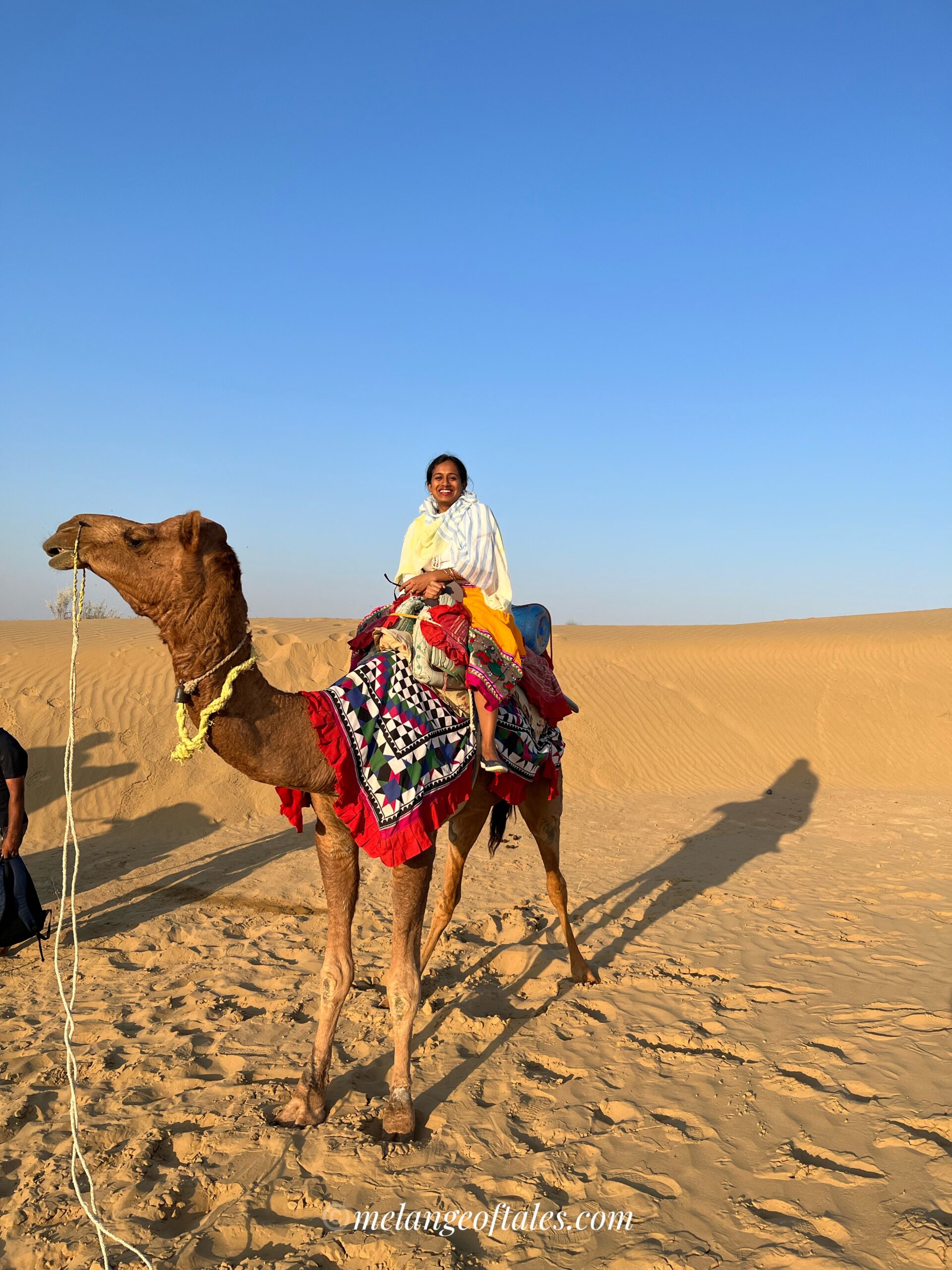
Reaching Jaisalmer
Jaisalmer is located to the extreme left of Rajasthan and hence very close to the India-Pakistan border. To reach the golden city I boarded a 4-hour train from Jodhpur. There are also direct trains from the capital city of Rajasthan – Jaipur and the capital city of India – Delhi.
Jaisalmer also has an airport and a bus stand. So commuting from any major city to Jaisalmer should be easy.
Tip: If you combine Jodhpur-Jaisalmer travel due to its proximity, you can save time and experience diversity.
Commute within Jaisalmer
Being a traveler who likes to explore places, I always prefer to travel on foot when the places to visit are within a radius of 4-5 km from my place of stay. I travelled on foot in Jaisalmer as well excluding our visit to the desert which was few hours away from the main city.
There are auto-rickshaws and taxis available as well for people who need them.
Where to stay
I stayed within the fort in a hotel called Mud Mirror Guest House. It was an experience being able to stay within India’s only living fort which is around 870 years old. There are hostels and multiple hotels within and outside the fort premises. You can choose to stay in one based on your convenience.
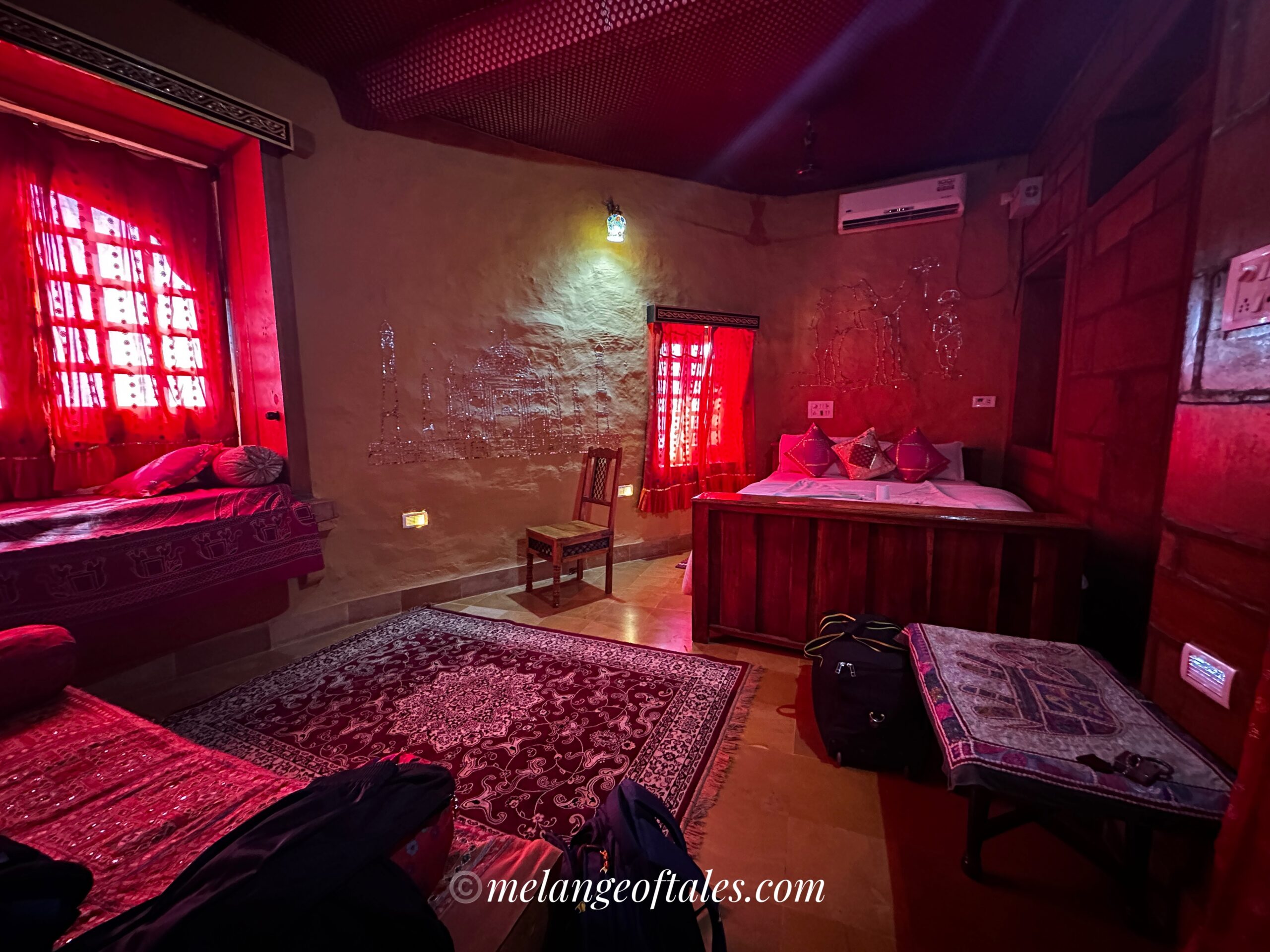

Exploring places to visit in Jaisalmer
Jaisalmer fort
Jaisalmer fort, also known as Sonar Qila is a UNESCO world heritage site. It is India’s only living fort and it houses a palace, ancient havelis (homes), shops, temples, restaurants, and hotels. The fort is 250 feet tall with 30 feet long walls. It was built in 1156 AD by Rawal Jaisal Singh from Yadu clan who are said to be the descendants of Lord Krishna.
This fort was attacked thrice in its history in different centuries. It was first attacked by Alaudin Khilji, followed by Amir Ali Afghan and then by Humayun but still stands strong till date. It is said that one fourth of the city’s population still lives within the fort.
Jaisalmer palace
The Maharaja’s palace is located within the Jaisalmer fort premises. It was initially the residence of the royal family which was expanded in different centuries by the rulers of Jaisalmer. The Maharaja’s palace is constructed entirely of sandstone which is unique to Jaisalmer. The sandstone construction gives a beautiful golden vibe to the entire city which also makes Jaisalmer sparkle during sunset.
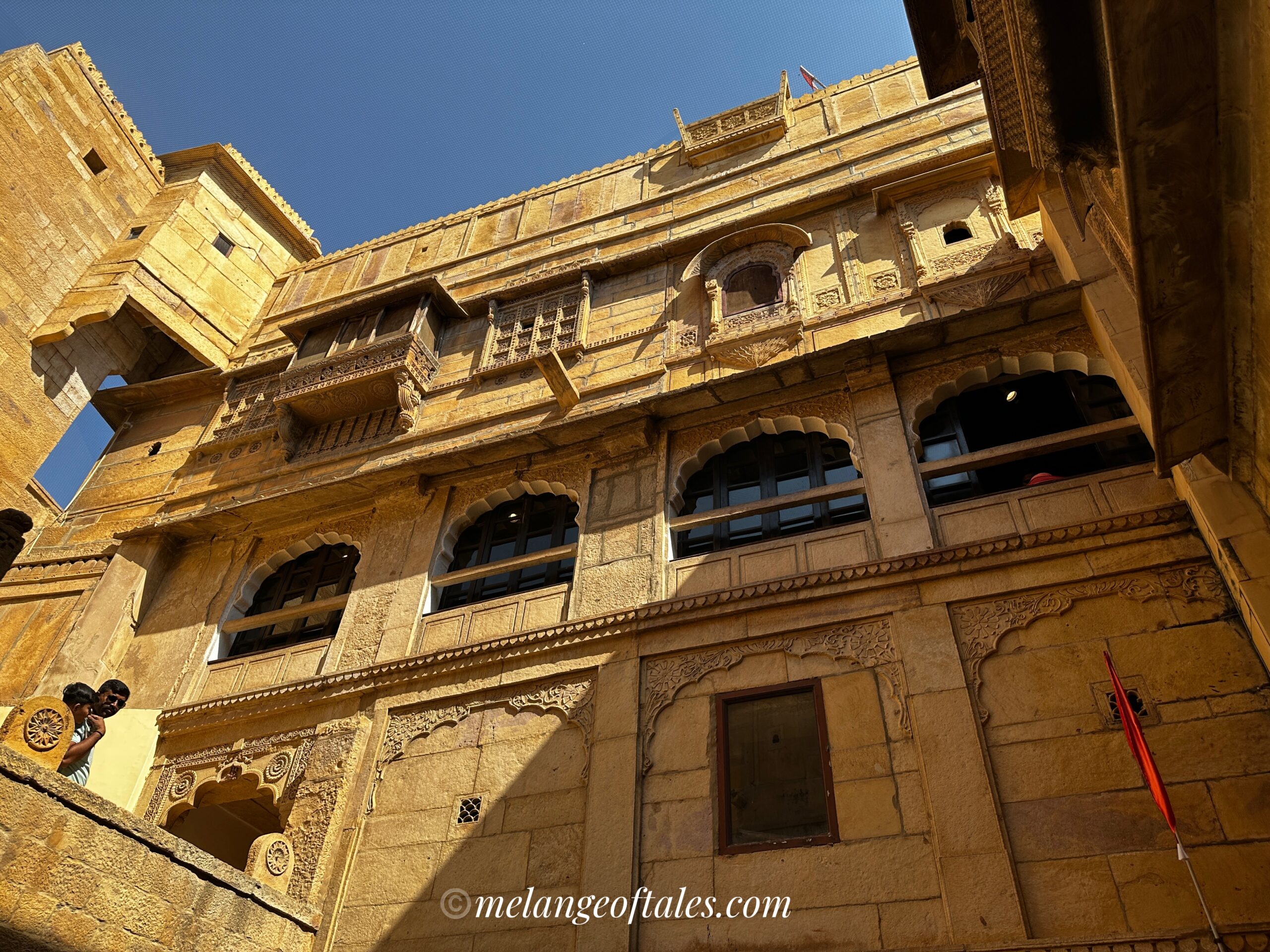
The palace exhibits beautiful artwork, textiles, paintings, sculptures, intricate carvings, a collection of historical weapons etc. One can spend hours learning about the rich culture and history of the kingdom, culture, festivals and the royal family.
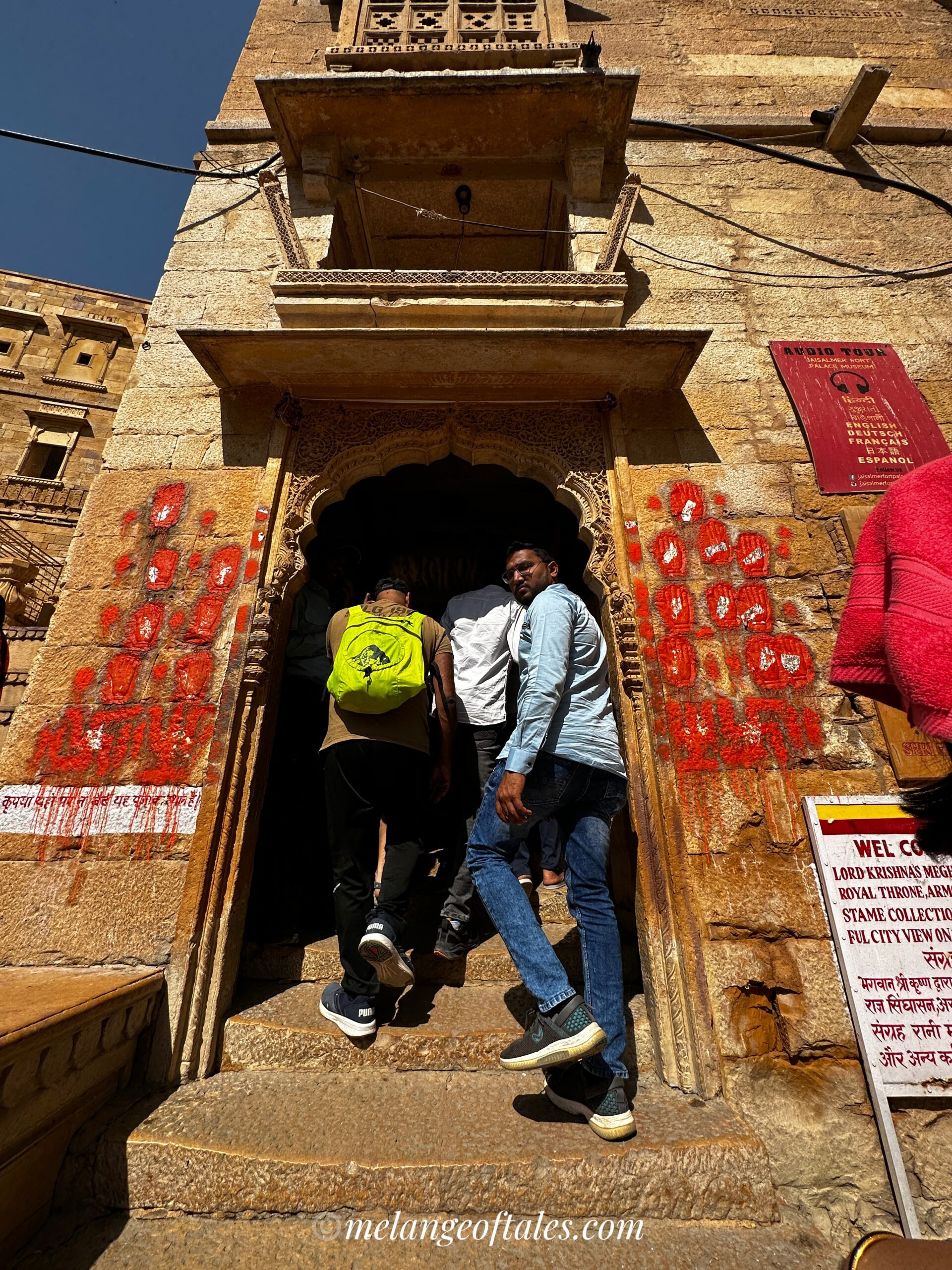
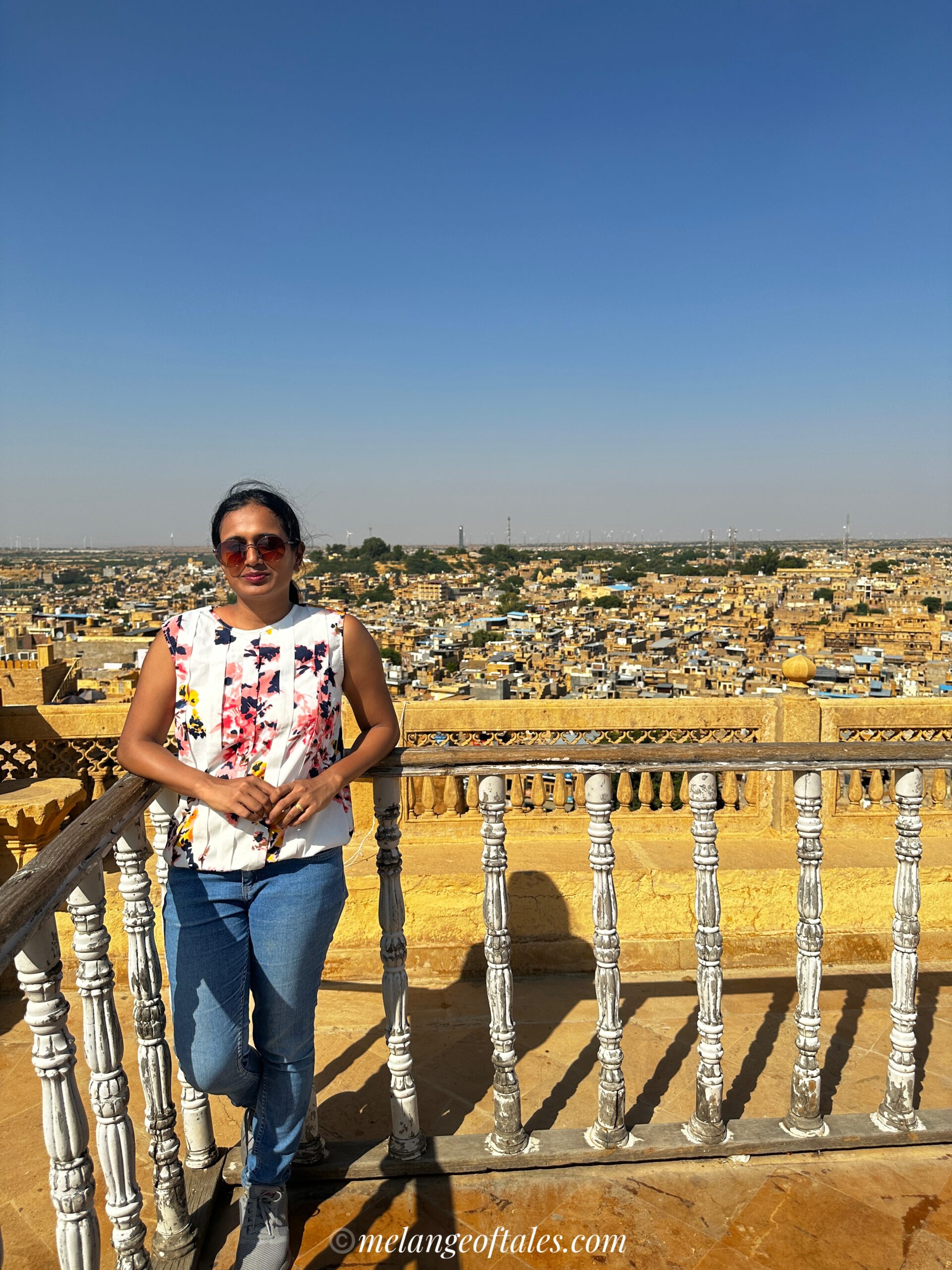
Timing: 9 am – 6 pm
Entry ticket: Rs.250 (Indian nationals) and Rs.500 (Foreigners)
Note: We also hired a guide to learn about the palace. We were charged Rs.200 for a group of 3.
Jain Temples of Jaisalmer
Jain traders were said to be thriving centuries ago and they built multiple Jain temples in and around Jaisalmer. There are 7 Jain temples to visit within the fort premises itself. It is said that these temples are connected to each other through gates and corridors, but we aren’t allowed to temple hop via those gates.
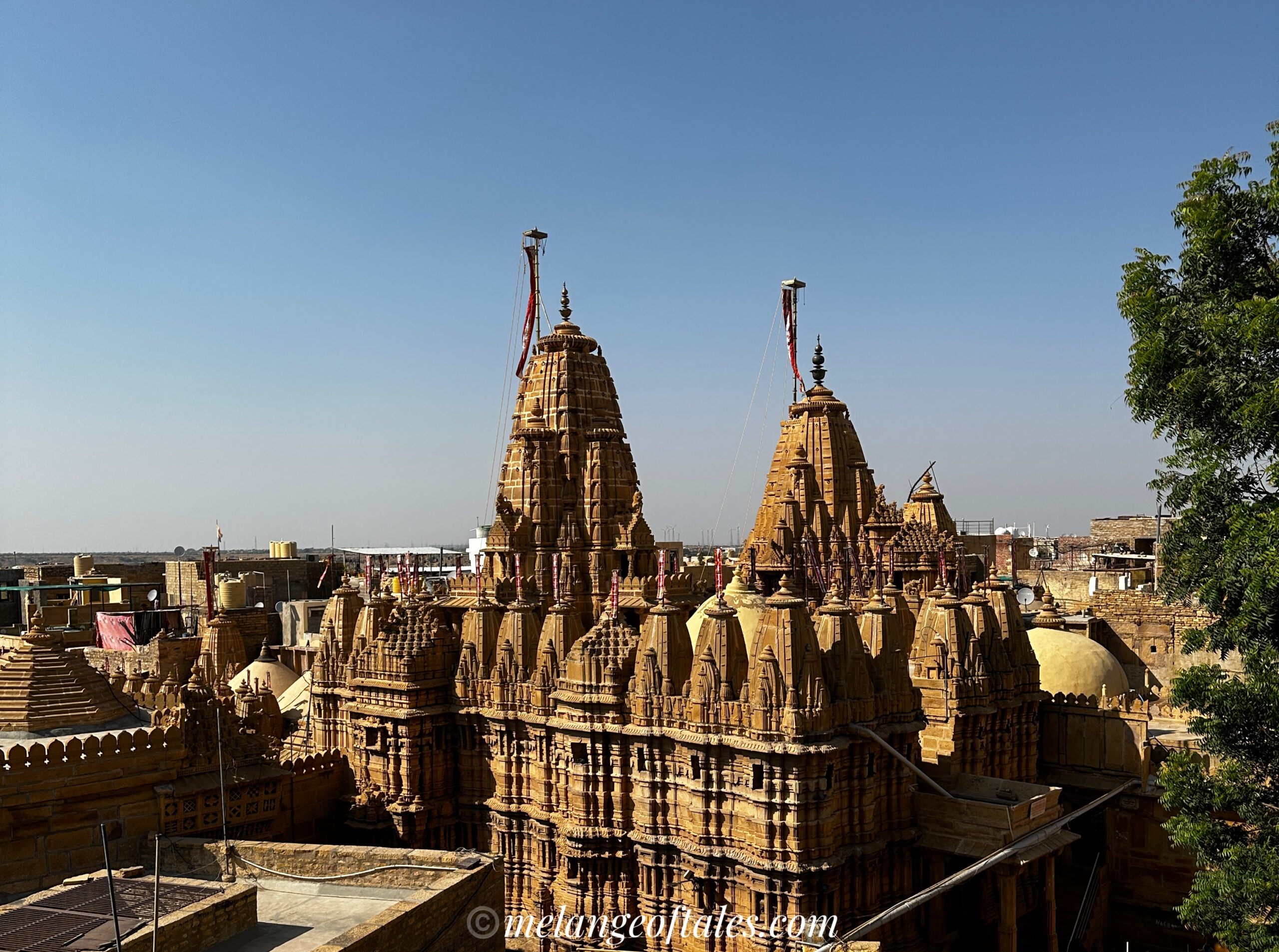
We visited Chandraprabhu Jain temple and Rishabdev Jain temple during our stay.
Note: We were asked to keep our phones, wallets and slippers outside the temples. Since our stay was within the fort and very close to the temples we didn’t mind shuttling between our room and the temples before we started our fort exploration 😉
Gadisar Lake
Gadisar Sagar is an artificial lake built as a water reservoir by the then king, Maharaja Gadsi Singh in the 14th century after whom it is named. The lake is a 2 km walk from the fort. We visited the lake for its famous sound and light show.
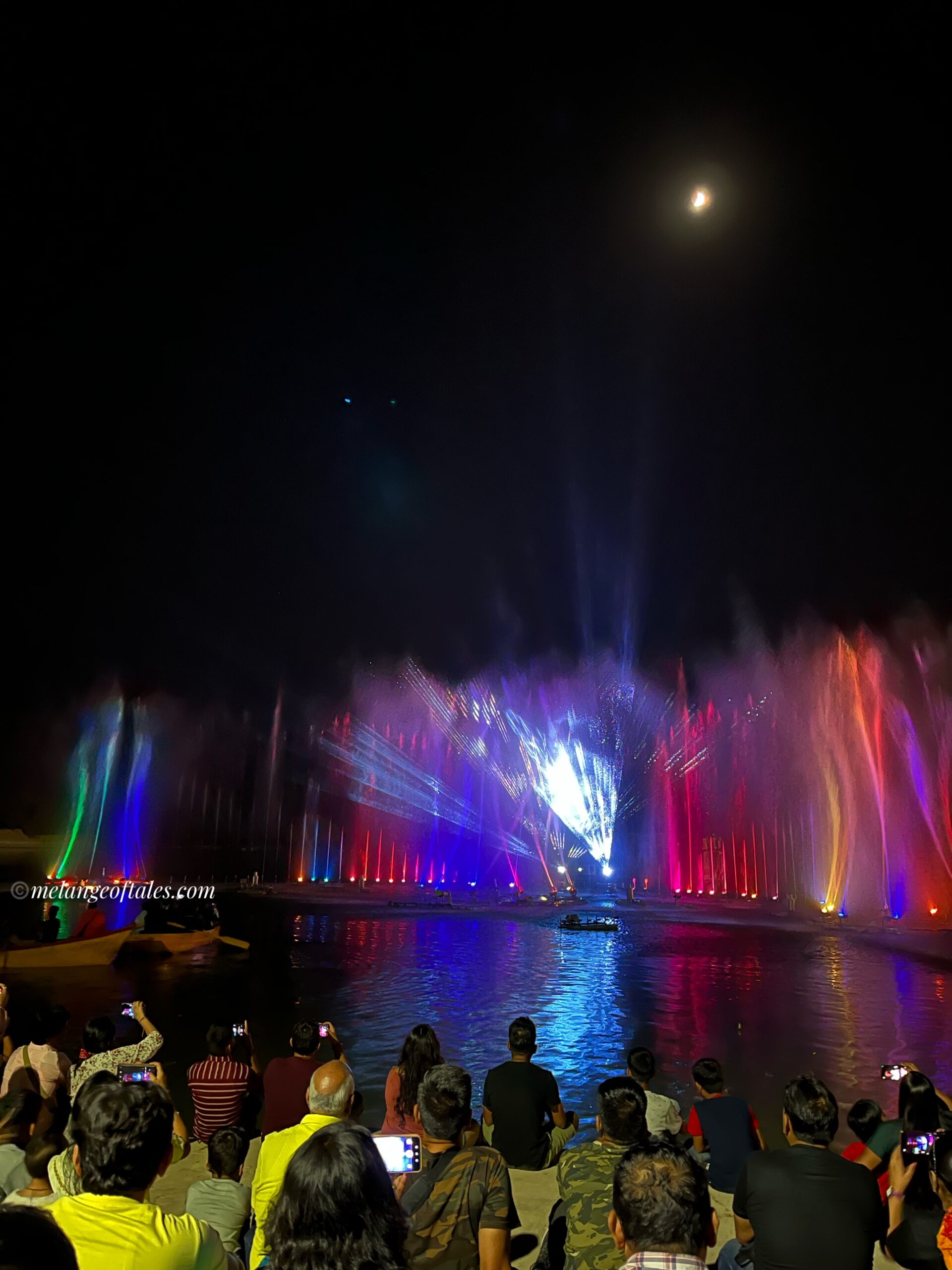
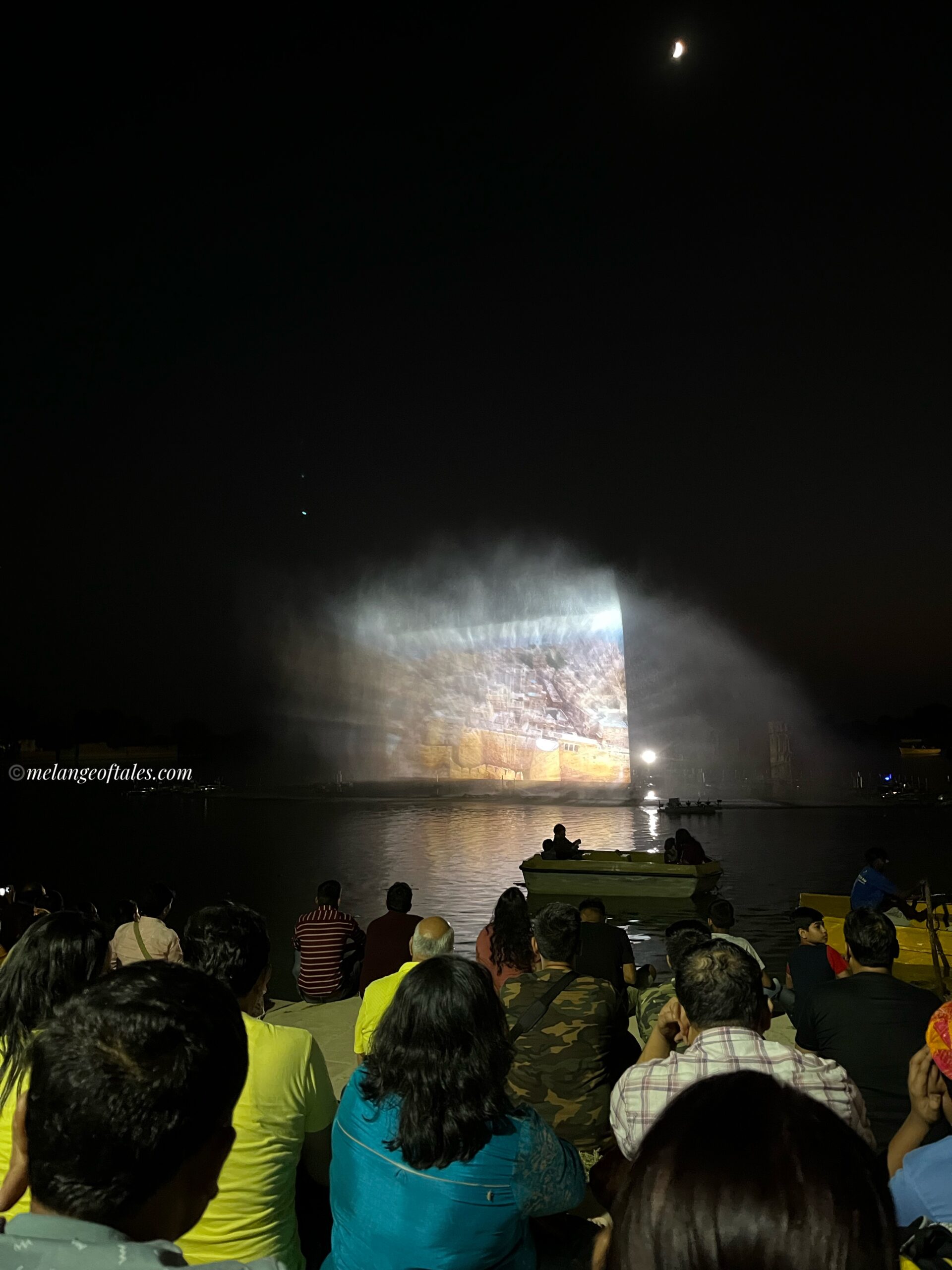
Timing for boating: 8 am – 7 pm
Timing for light and sound show: 7 pm
Patwaon ki Haveli
Patwaon ki haveli is one of Rajasthan’s architectural marvels. The beauty of the intricately carved house will make one speechless for few seconds. The haveli comprises of 5 different houses of brocade brothers which was meant for 5 Patwa brothers. Currently 3 out of the 5 houses still have people living in them while the other 2 are open for tourists.
The Archeological survey of India maintains a haveli. There isn’t much to see in it.
Entry fee: Rs. 10 (Indian nationals) and Rs.50 (foreigners)
The Kothari’s Patwa Haveli museum is worth looking at. It is a private museum.
Entry fee: Rs. 100 (Indian nationals) and Rs. 250 (foreigners)
Note: We also hired a guide to learn about the haveli and its history. We were charged Rs.200 for a group of 3.
Nathmal ji ki Haveli
It is a private haveli known for its intricate exterior carvings. We had a look at it from the outside.

Desert National Park
There are 2 major sand dunes in Jaisalmer, 45-50 km from the city. They are Sams and Khuri dunes.
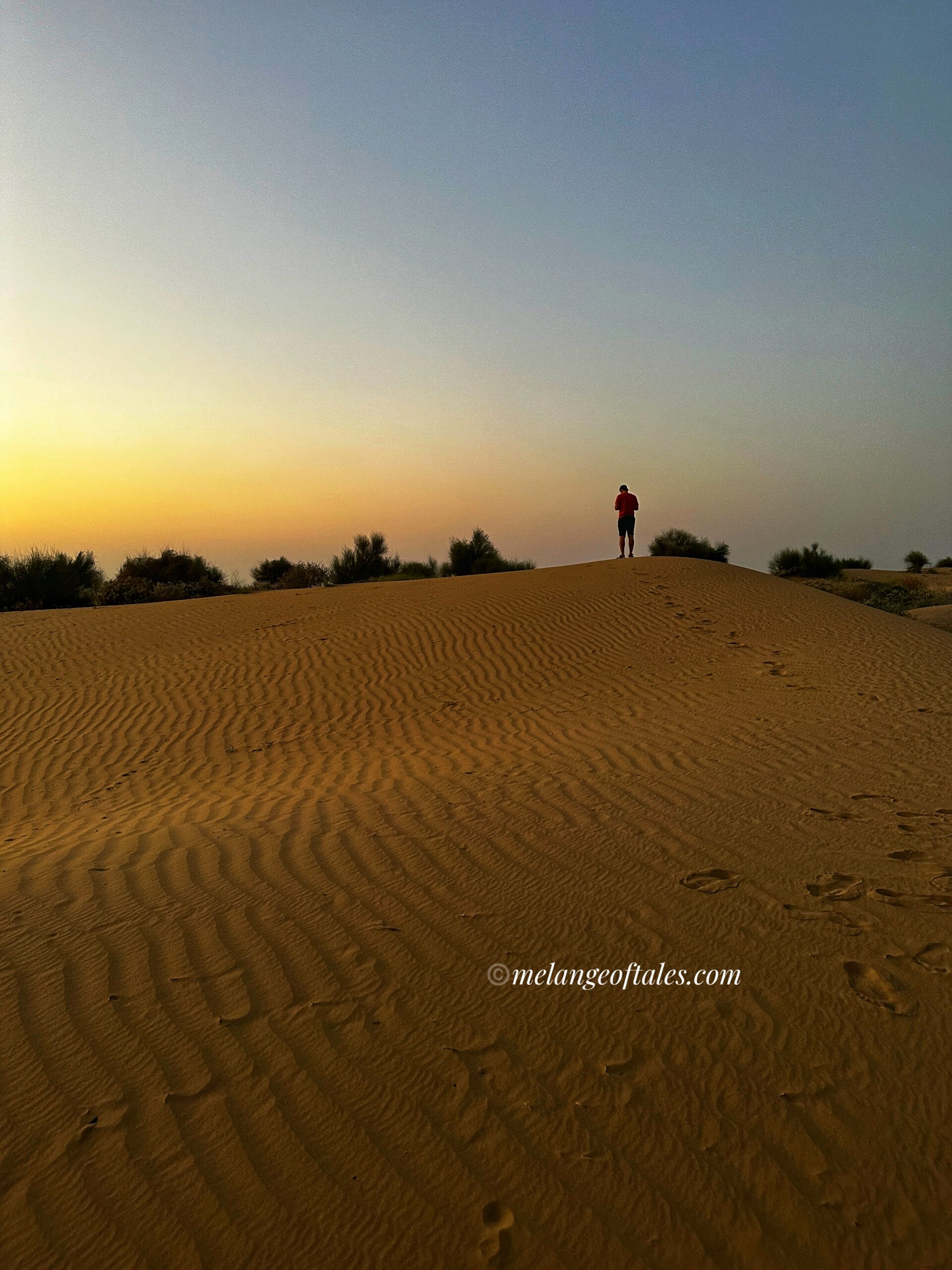
Sams Sand Dunes
Sams Sand Dunes are the most famous and commercialized with luxury tents, camel and jeep safaris, dance and dinner. In Sams the desert vegetation is very less and for a distance of 3-4 km there is nothing but sand which keeps changing due to the wind.
Khuri Sand Dunes
Khuri Sand Dunes is where I visited. It is not commercialized and hence very less people visit. There aren’t as many activities like Sams Sand Dunes but you can still enjoy the camel ride and a beautiful night right under the sky full of stars far from the city.
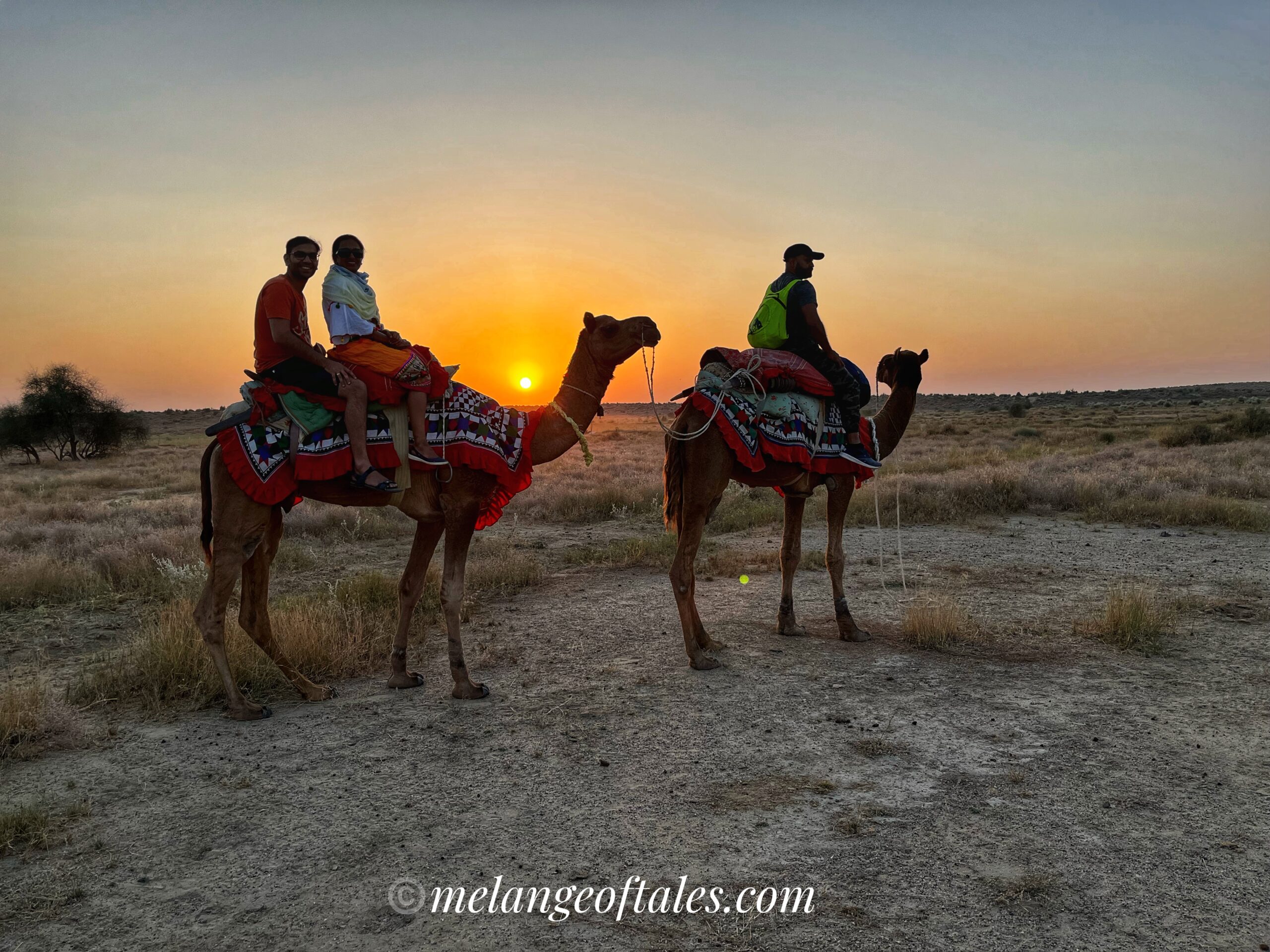

Overnight stay at Khuri sand dunes cost us 2500 rupees per person which included the drive to the desert, camel ride, refreshments, dinner and breakfast. Stay at Sams is said to be more expensive than what you might be spending at Khuri.

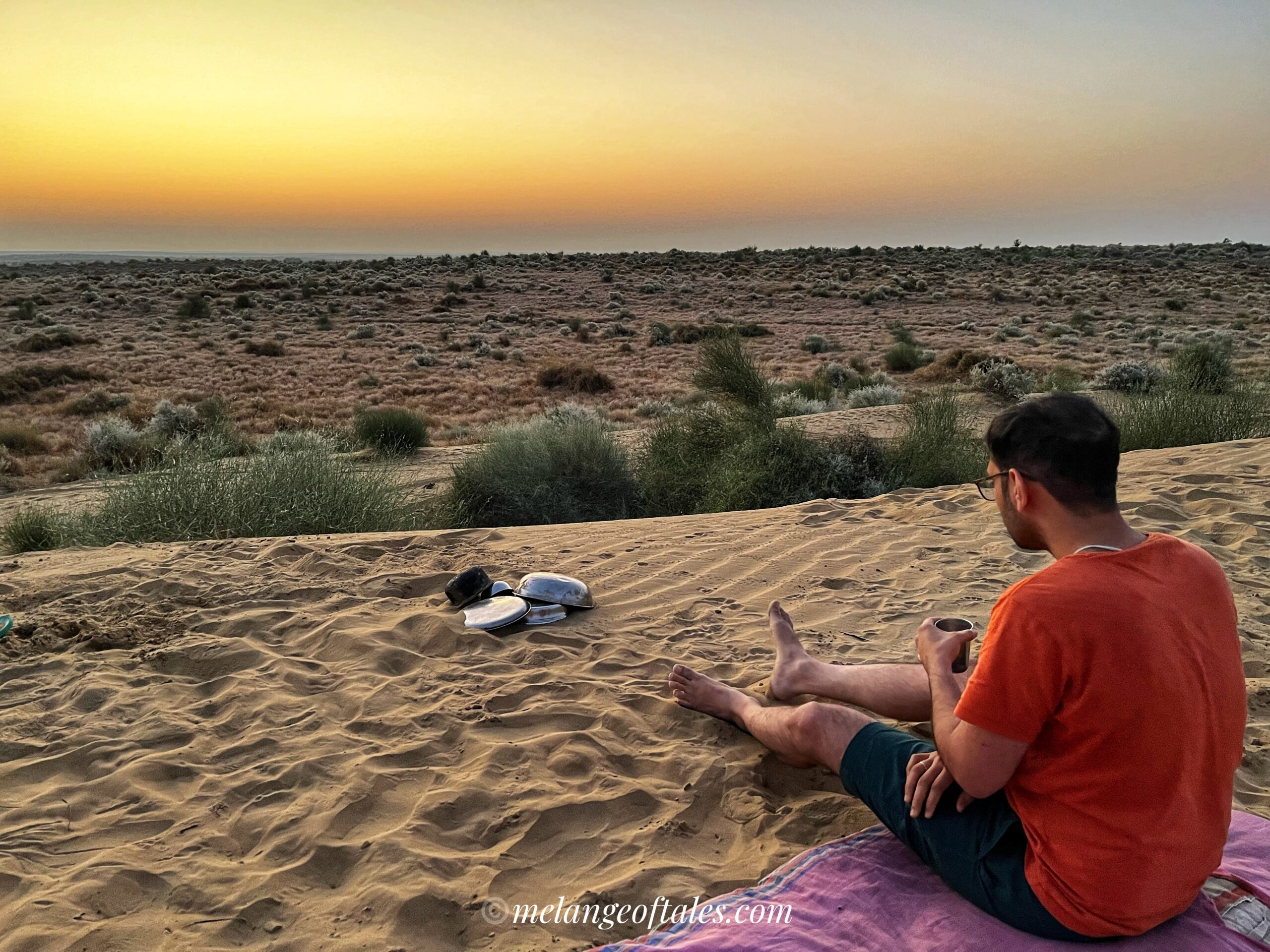


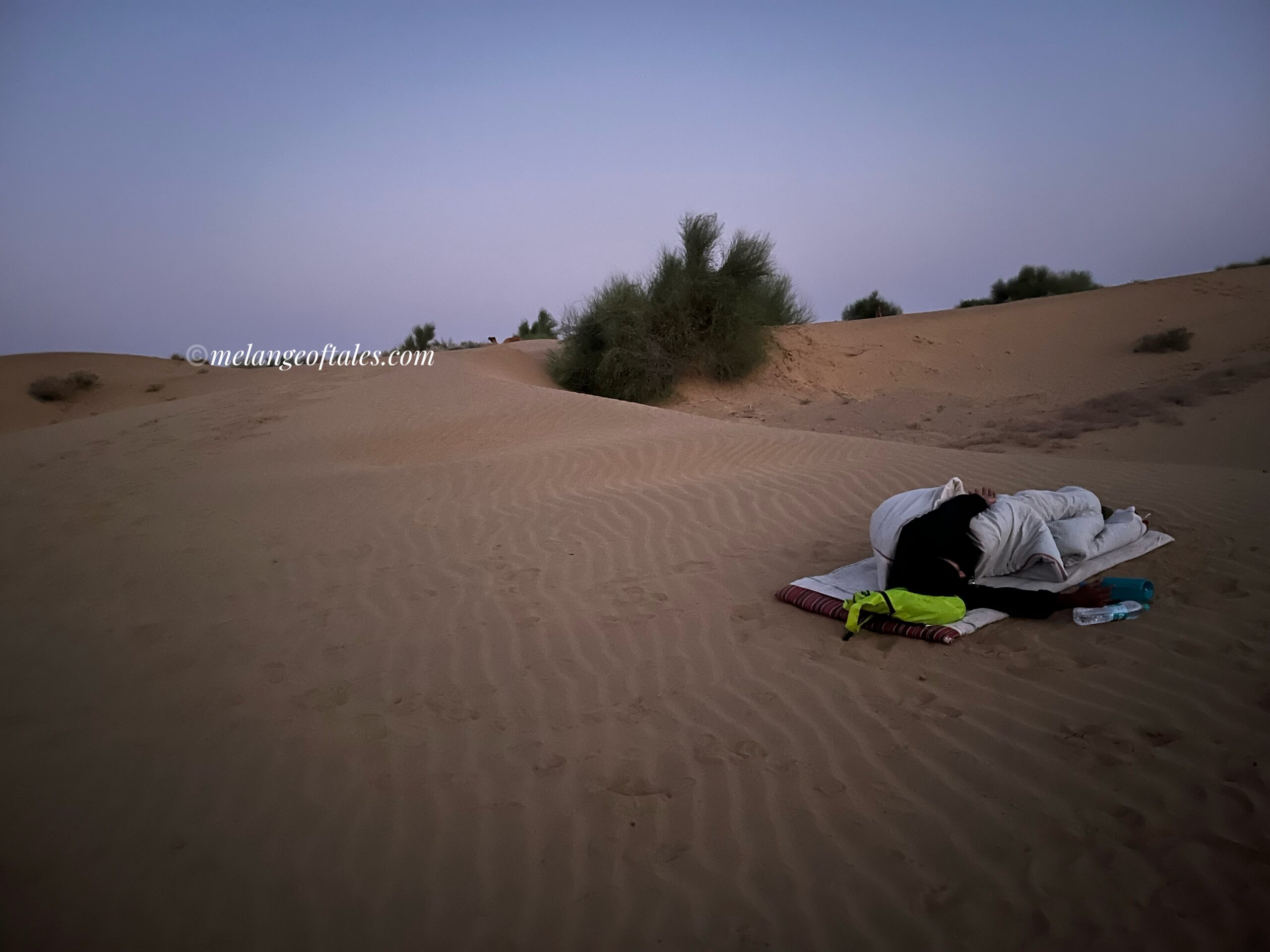
If you want to experience the desert tour at a cheaper cost then it is better you go with tours that don’t operate from the hotel where you stay.
Click here to check out the different tour options provided.
Kuldhara
Kuldhara is a ghost village which falls in between Jaisalmer city and the Desert National Park. The village was the residence of Paliwal Brahmins from the 13th century. One night in the early 19th century everyone in Kuldhara and the 83 nearby villages vanished. It is also said that they had cursed the village such that nobody else can ever spend a night there. The ruins of Kuldhara are now protected by the Archeological Survey of India. The place and the stories behind this ghost village are spooky.
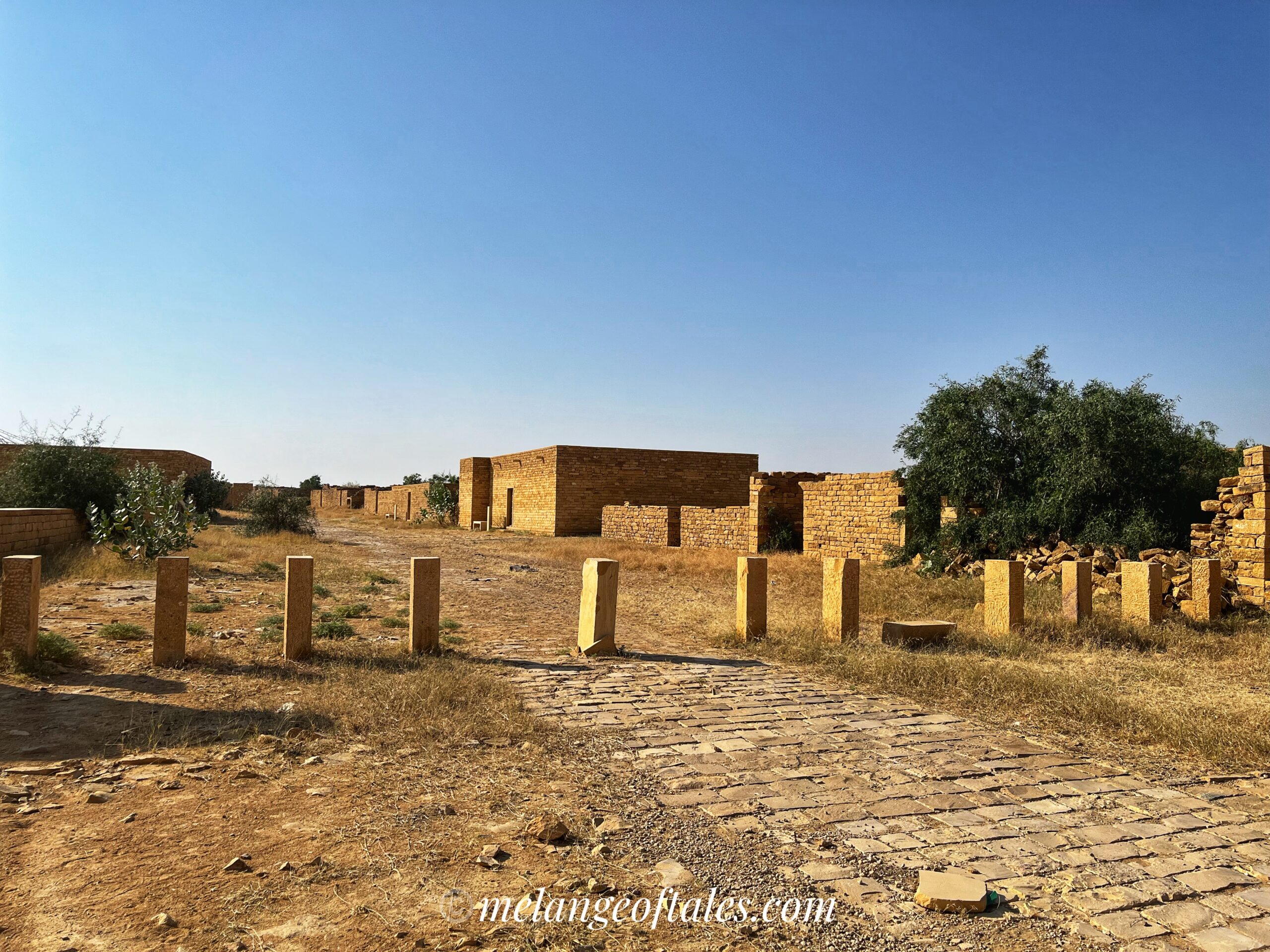


Shopping at Jaisalmer
Jaisalmer is famous for its mirror work embroidery, rugs, carpets, shawls, carved wooden items, jewelry, fossil stone, sandstone and camel leather products.
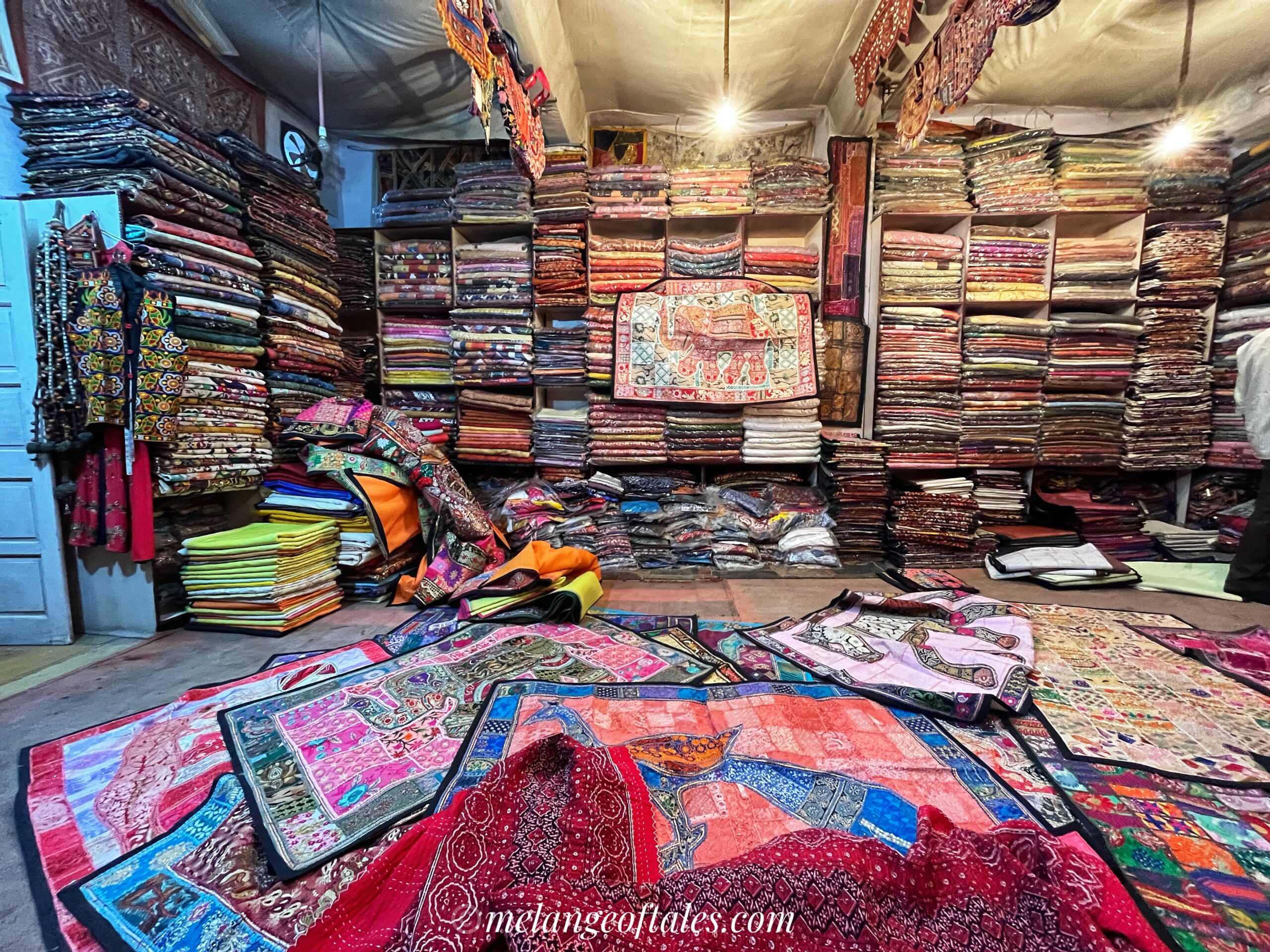
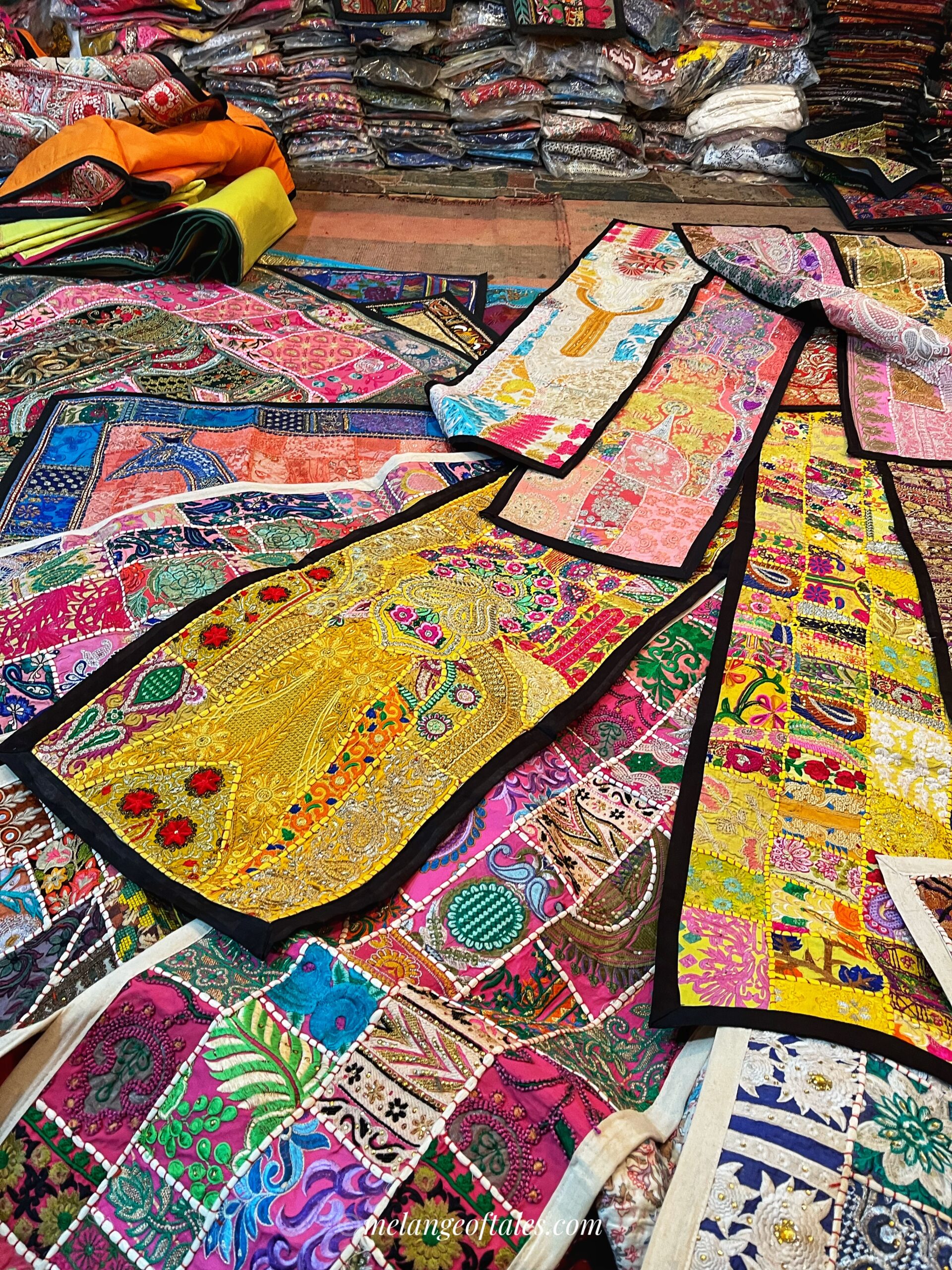
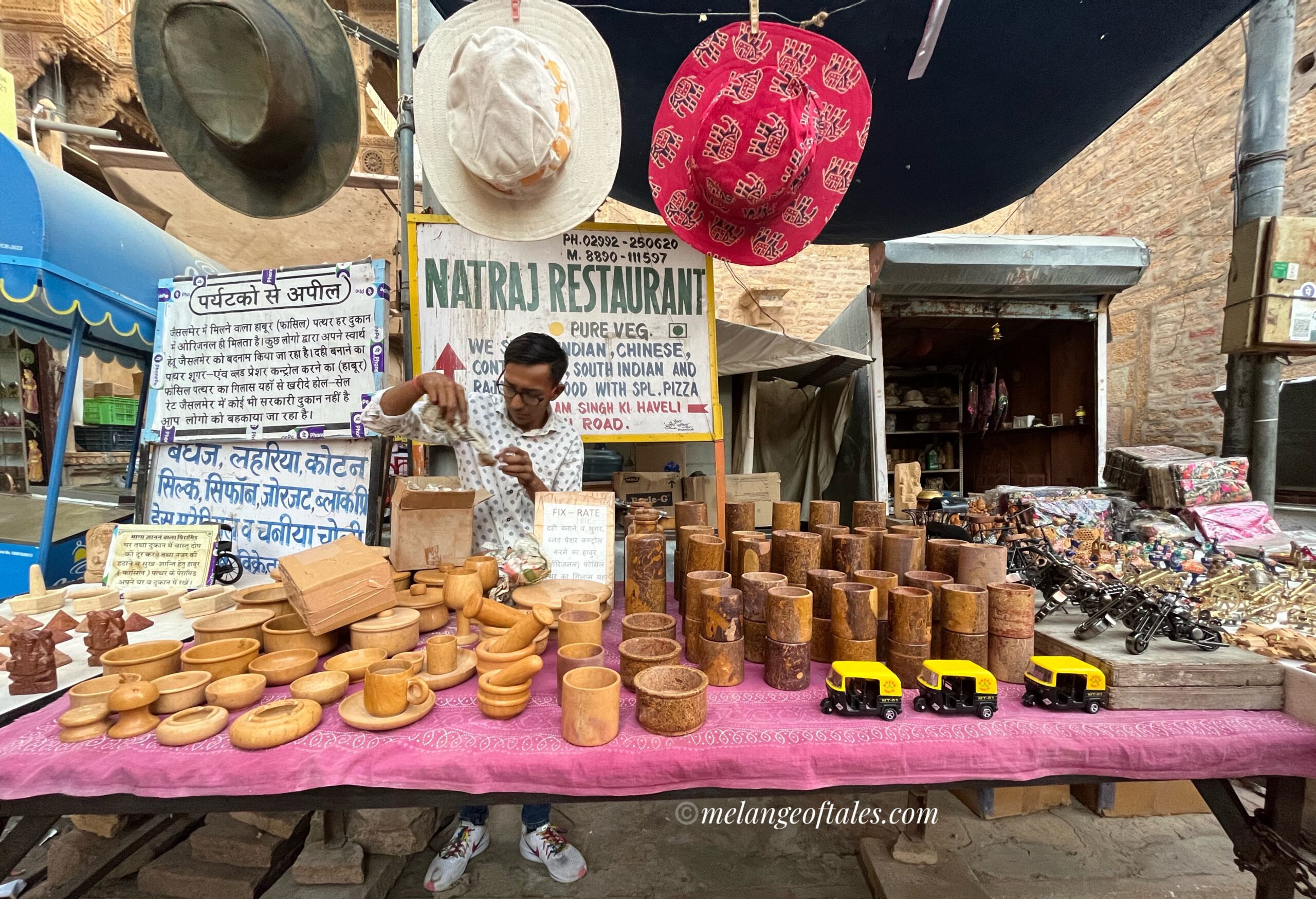
We visited Sadar bazaar for shopping but there are other bazaars like Bhatia bazaar, Pansari bazaar, Sonaron ka bazaar, Manak Chowk and Seema Gram.
Tip: I would suggest you buy gifts from cities like Jaisalmer and not Jaipur in Rajasthan. You get almost the same set of items everywhere but in Jaisalmer you will have more bargaining power.

I loved exploring Jaisalmer on foot, interacting with the locals, having local cuisine, shopping exquisite mirror work embroideries, staying in a living fort, and sleeping in an open desert trying to figure out the constellations. The golden city has cast an everlasting spell on me. Rajasthan will transport you into a wonderful world full of grandeur, varieties, and color.
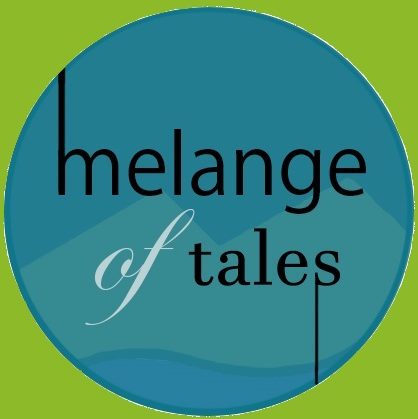
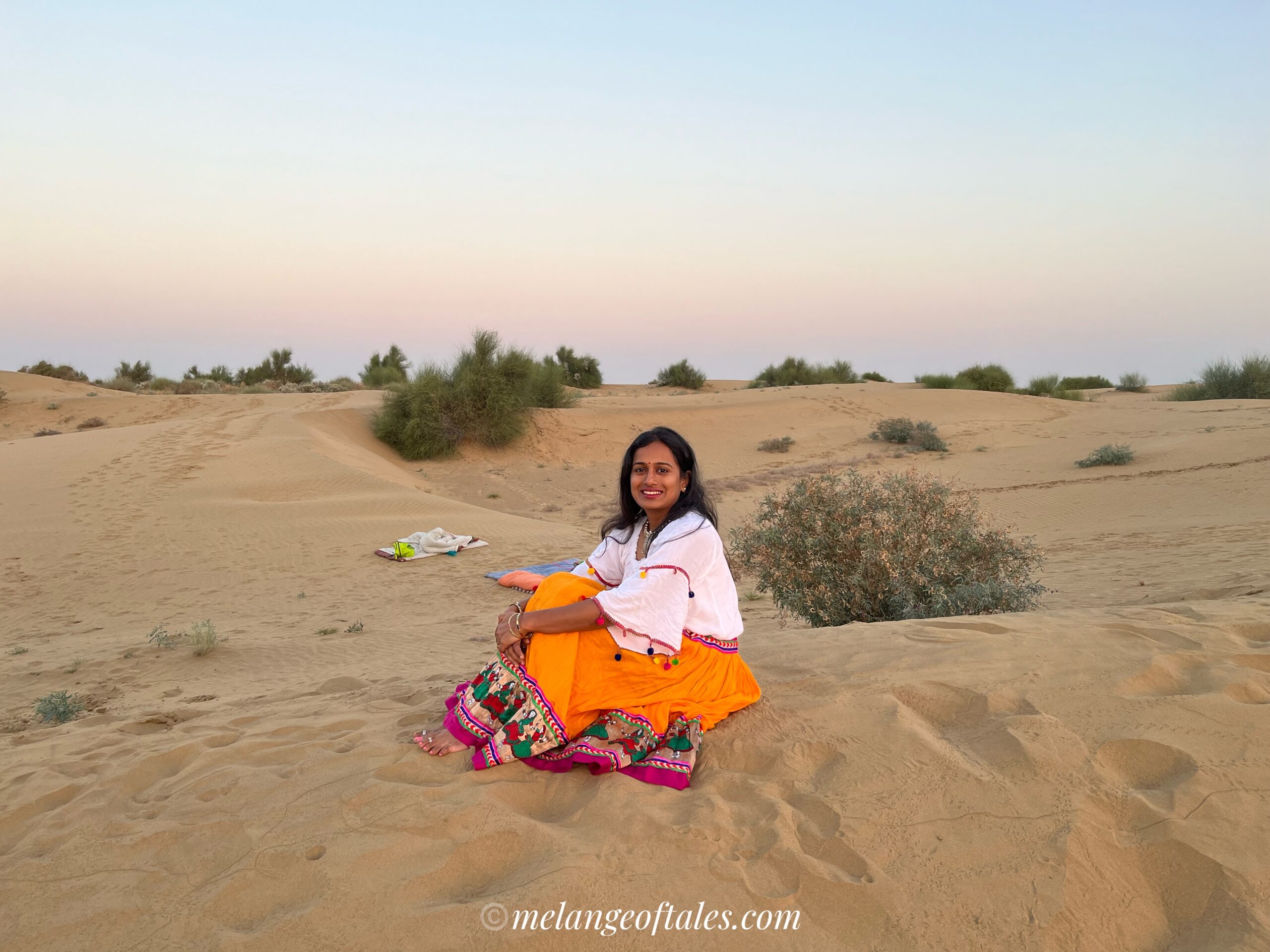

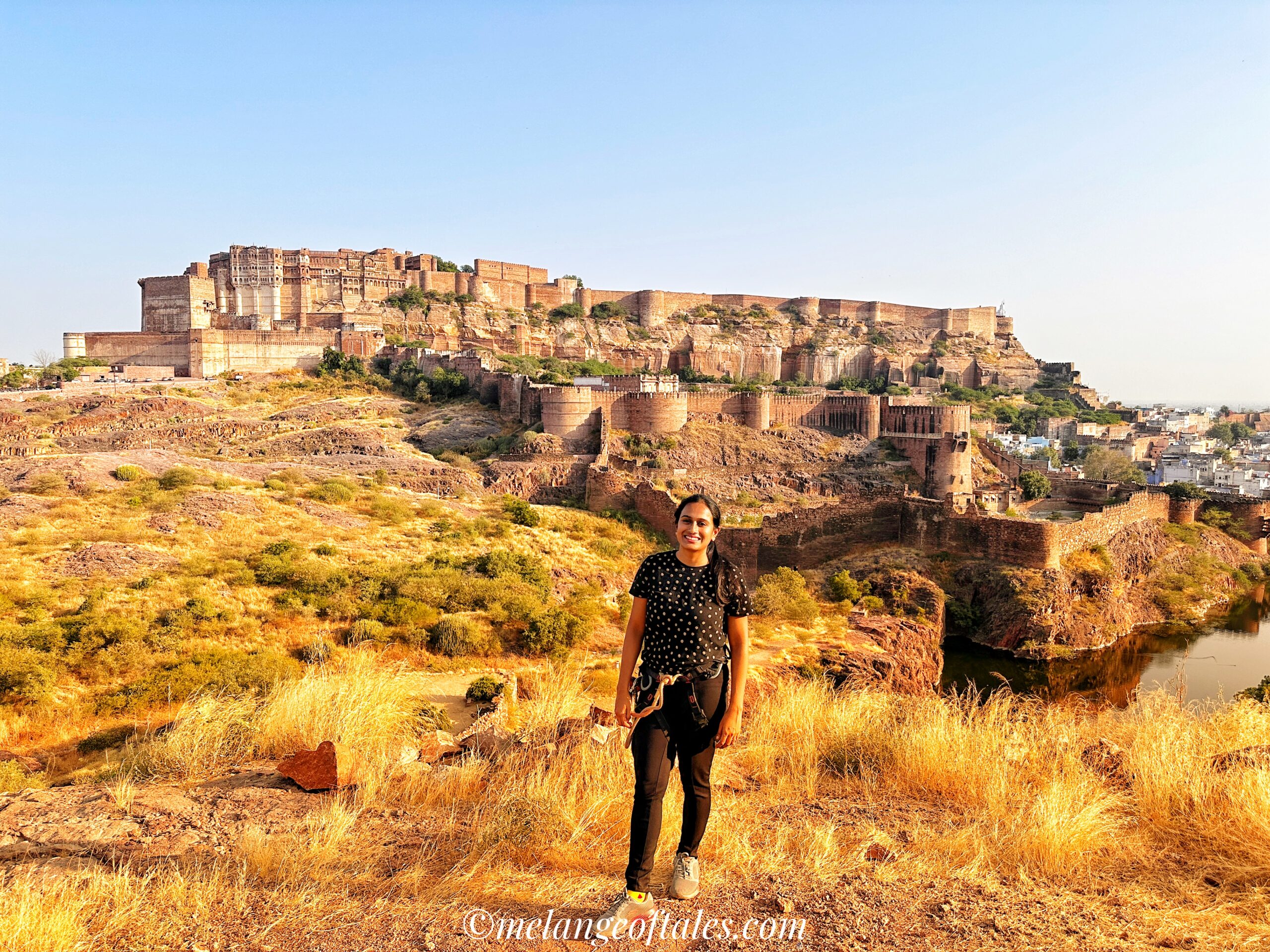
Yes, Recently I planned the trip to Jaisalmer, and it was truly a memorable trip. As this article explained, not all places but I explored most of the attractions. The camel desert safari made me feel adventurous, I just loved it.
I agree! Jaisalmer is a must visit destination in India 🙂
Jaisalmer is truly a magical destination! The golden sandstone architecture, the magnificent Jaisalmer Fort, and the beautiful desert landscape make it a must-visit. Exploring the narrow alleys, vibrant markets, and staying in a desert camp are unforgettable experiences. A perfect blend of history, culture, and natural beauty!
Very lovely and informative guide! Jaisalmer is truly the golden jewel of the Thar Desert. It was great to read about the forts and havelis. If one wants hassle free local taxi and tour services in Jaisalmer, Car tour Jodhpur is a great option. Thanks for this useful information.